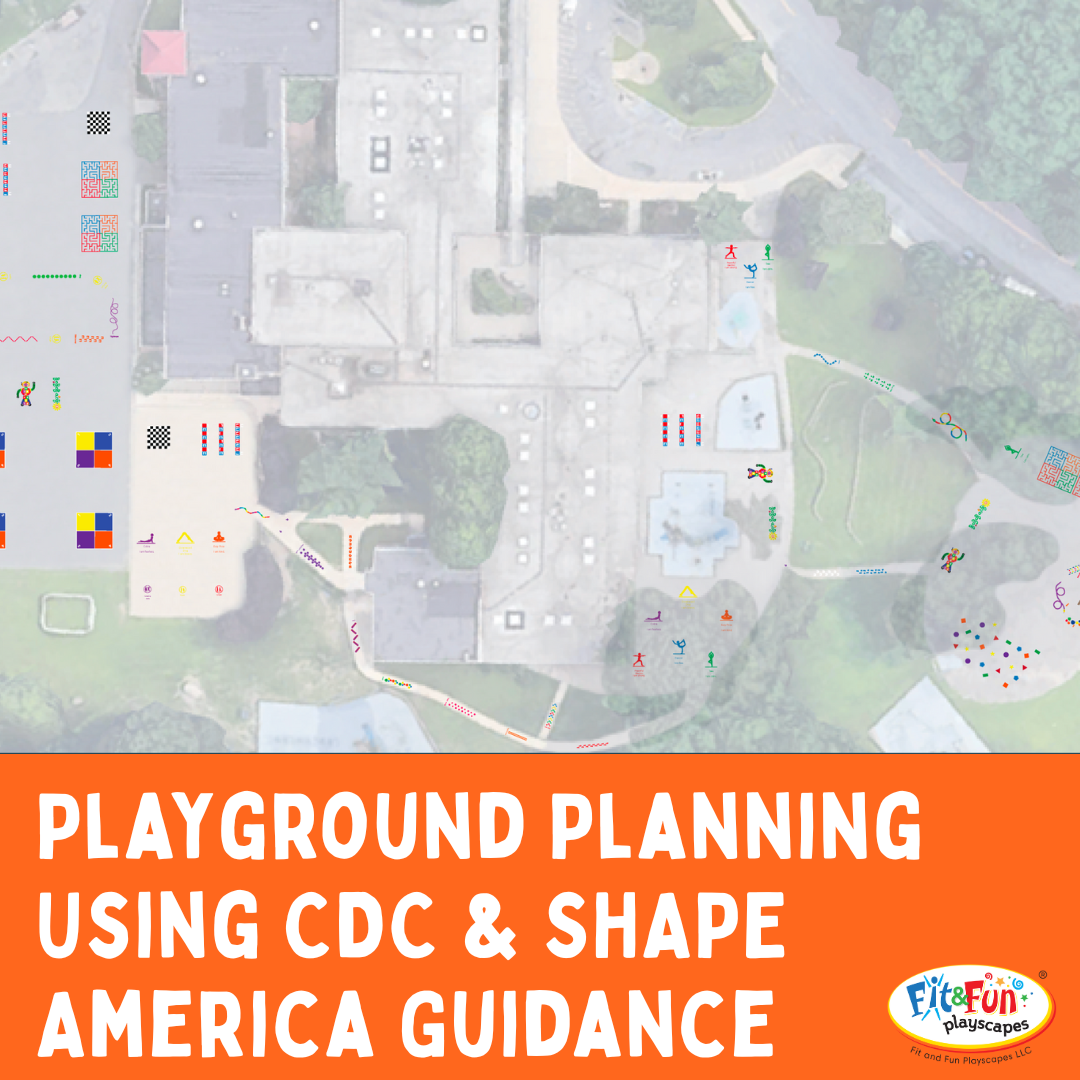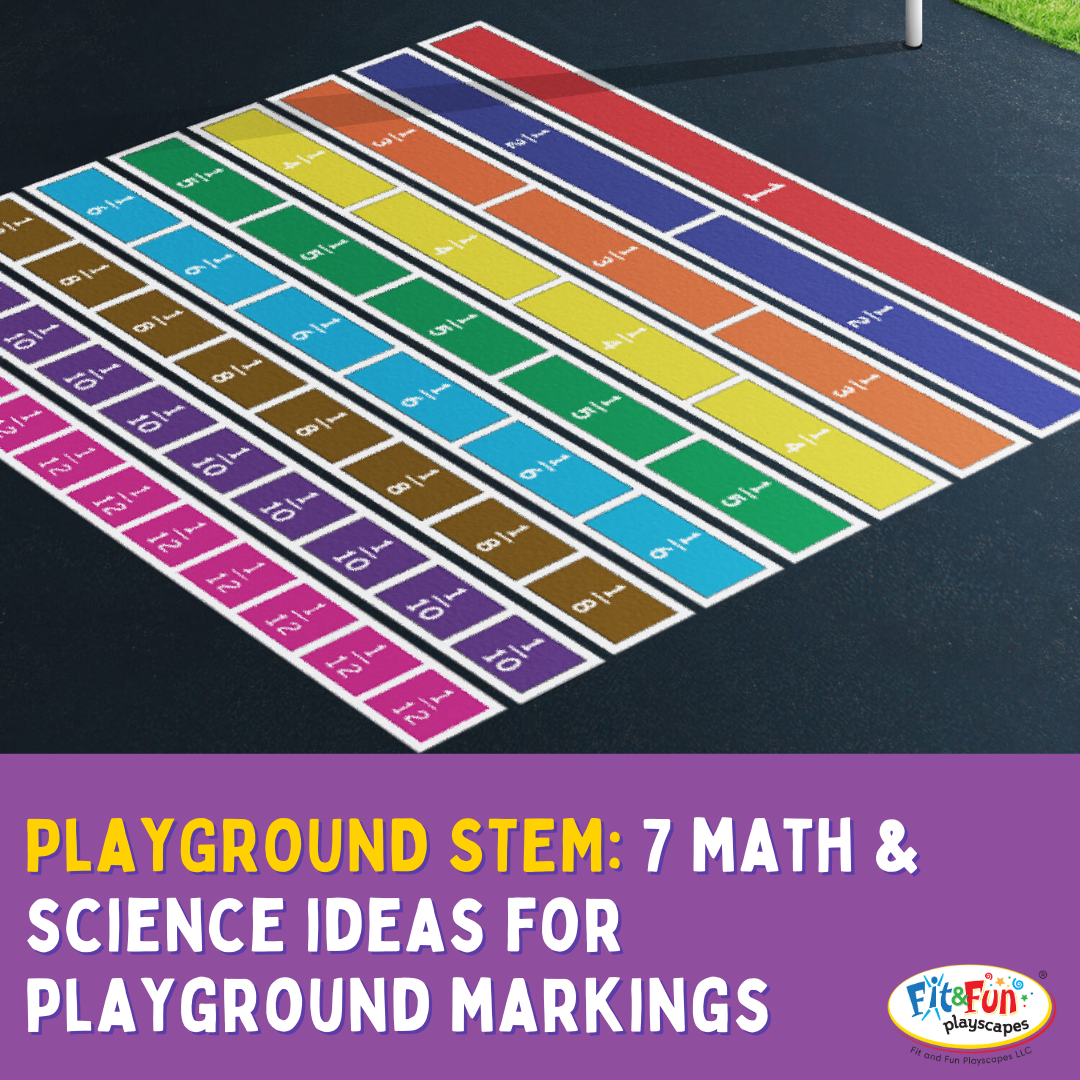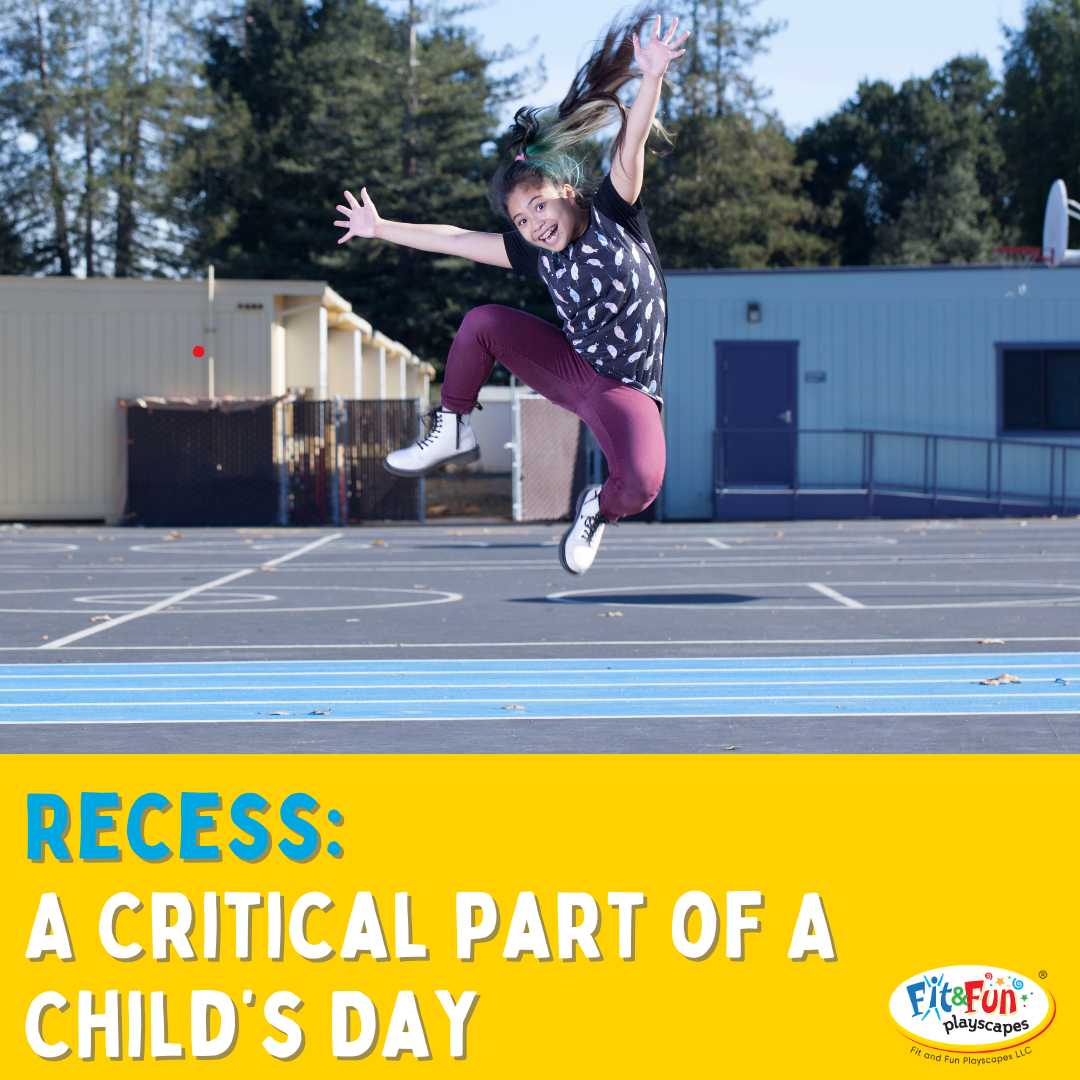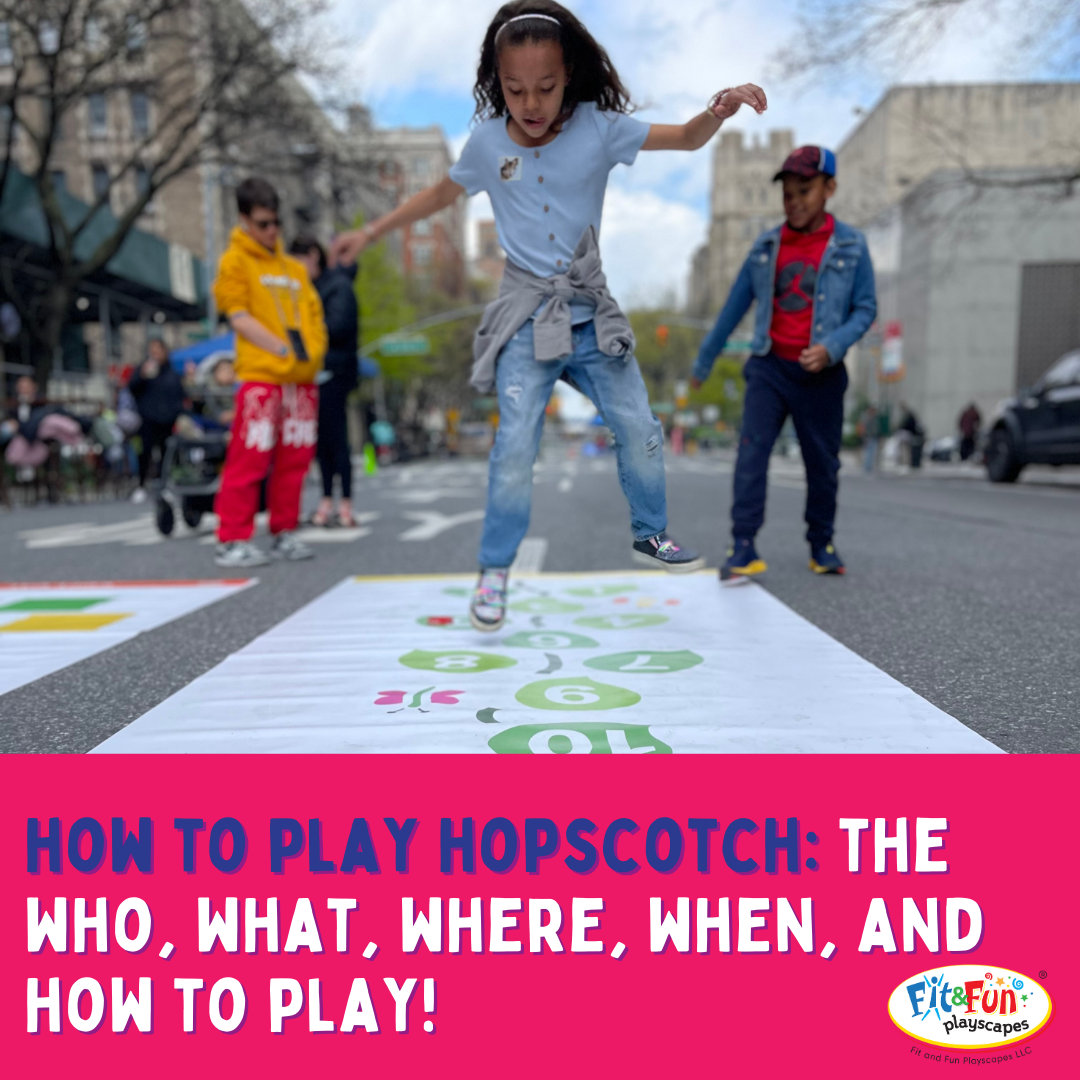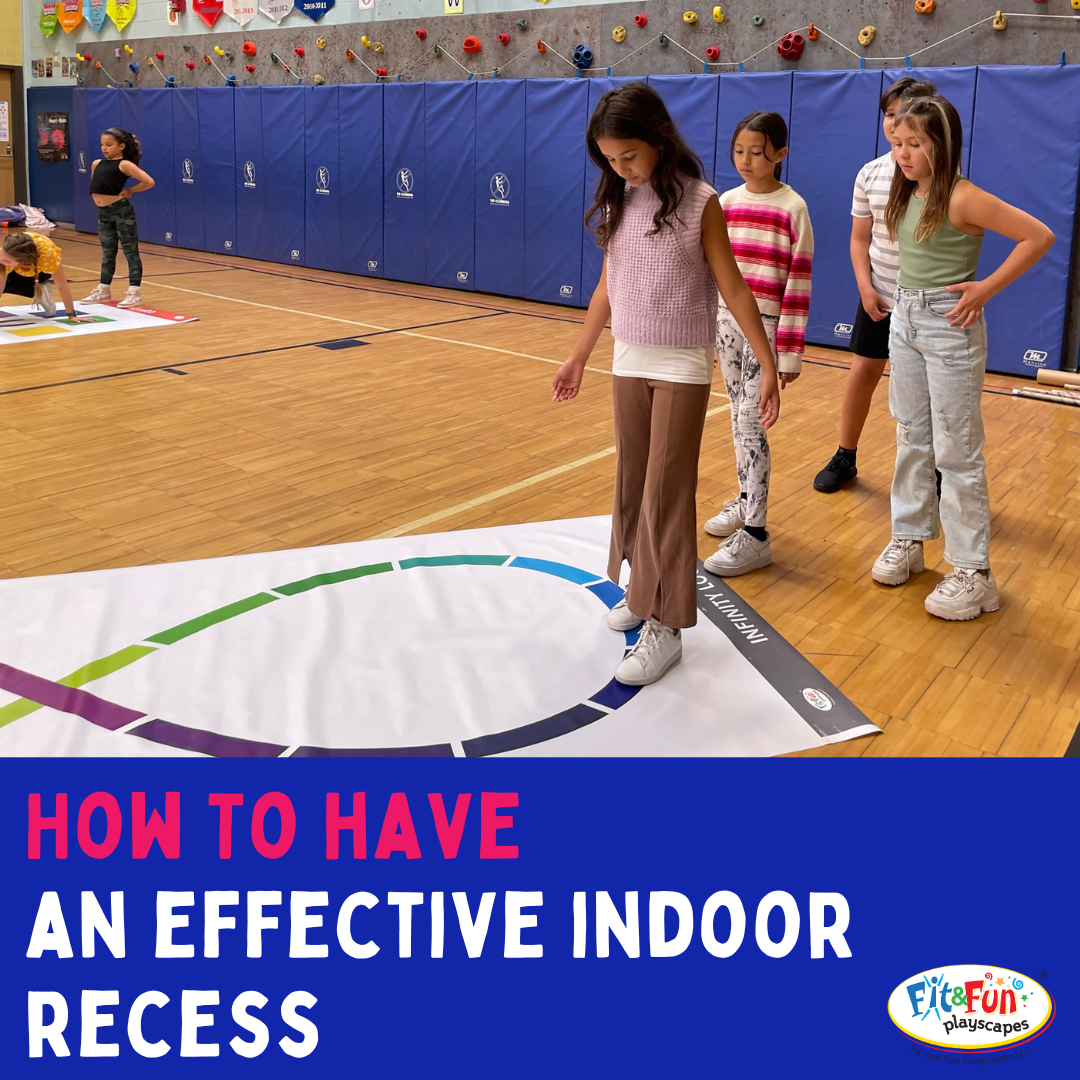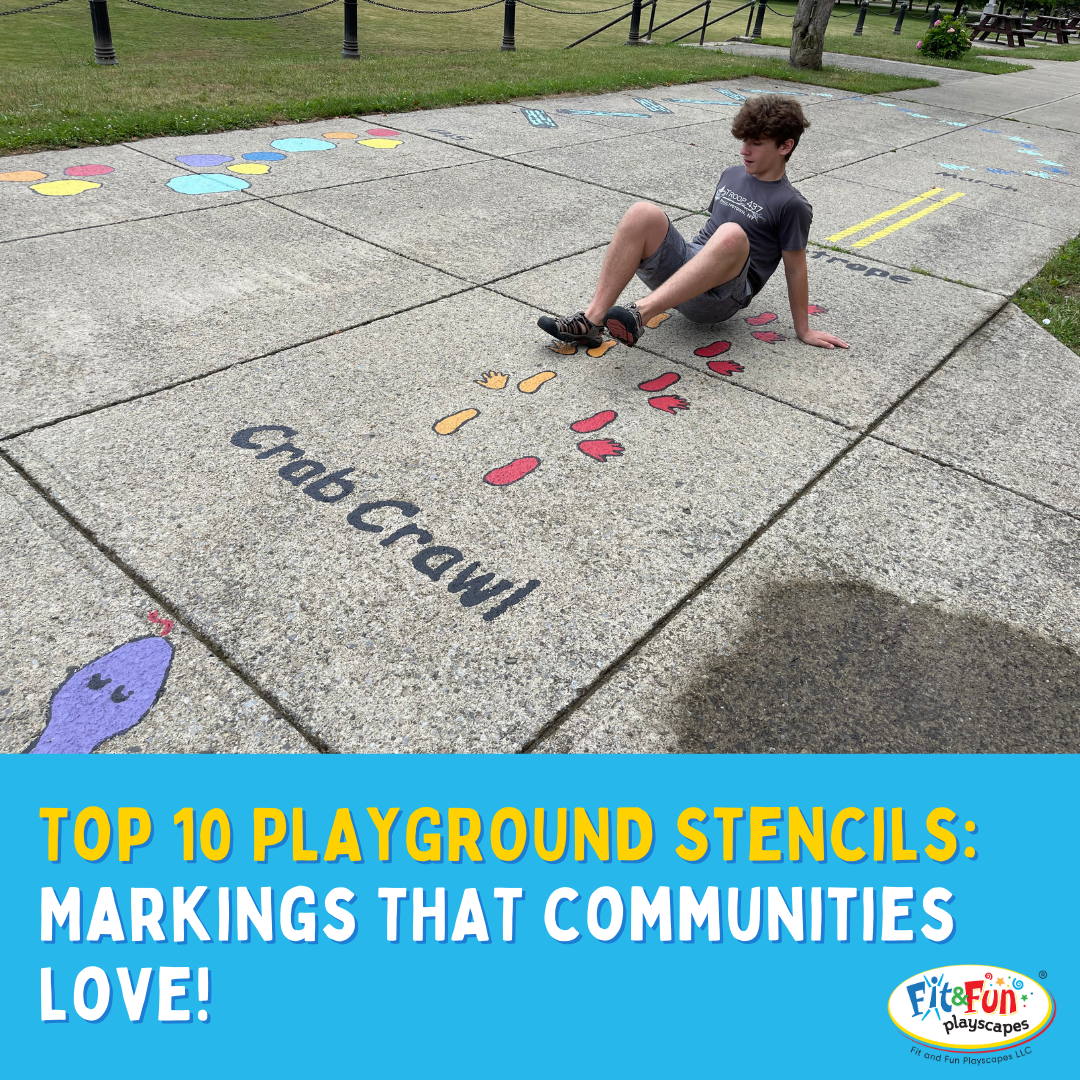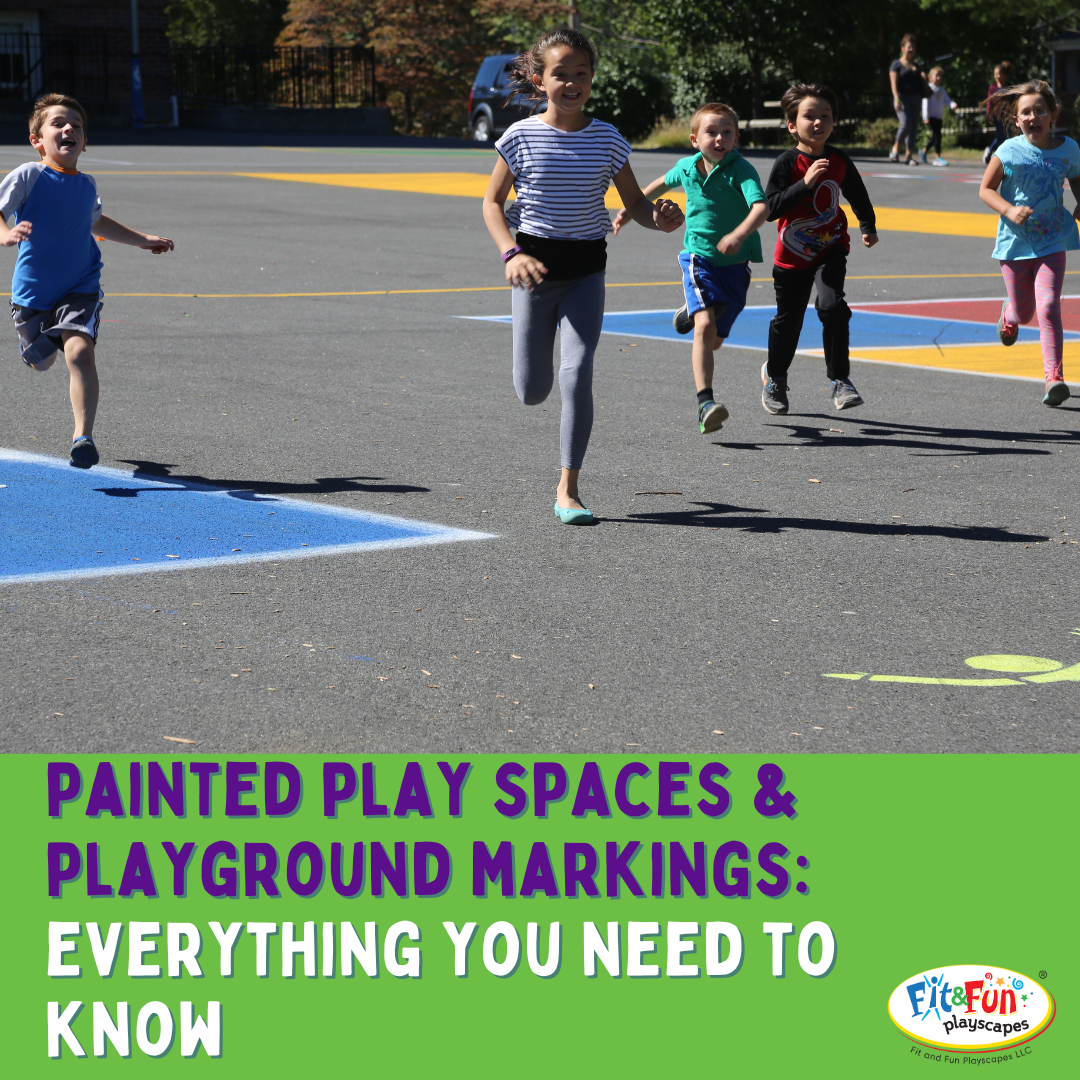RECESS & PLAYGROUND RESOURCE CENTER
We’re excited to provide you with our Recess and Playground Resource Center, the “in” place to explore the many facets of recess and play. Since we’ve been designing games and activities and helping thousands of schools and communities create enjoyable, inclusive play spaces for almost 14 years, we’ve collected quite a bit of information so we figured we’d pass all those experiences along! Here, you can access information about our outdoor and indoor activities, games, and play opportunities, as well as learn more about why play is important and how to benefit from a well-planned playground.
Be sure to check out this informative CDC and SHAPE American resource where Fit and Fun Playscapes is named as a resource for Category 3: Recess Guide Recess Planning In Schools: A Guide to Putting Strategies for Recess into Practice.
Additionally, please visit the US Play Coalition's website about the importance and benefits of play for people of all ages and abilities, the different types of play, and research about the science of play.
What is recess?
What makes a great active recess?
Can recess only take place outdoors?
What is play?
What are the variations on the types of play?
Why is Recess important?
Recess Planning and Zoning
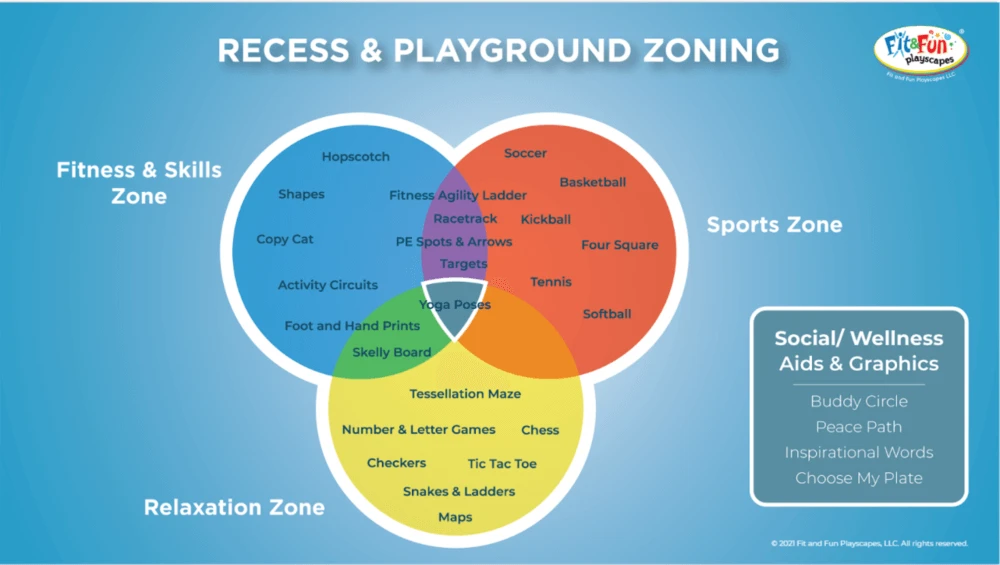
Why is Play important?
Play is important to both children and adults because it supports physical, mental, emotional, and social well-being across the lifespan. For children, play is a vital part of growing up—it supports cognitive development by encouraging creativity, problem-solving, and language skills, while also promoting physical health through movement and motor skill practice. Emotionally, play allows children to express feelings, develop resilience, and understand empathy. Socially, it teaches cooperation, communication, and conflict resolution.
Cognitive Development: Play fosters creativity, problem-solving, and decision-making skills. It helps build attention, memory, and language abilities.
Physical Health: Active play improves motor skills, coordination, strength, and overall fitness.
Emotional Growth: Play helps children express feelings, develop empathy, and build resilience in a low-stakes environment.
Social Skills: Through cooperative and imaginative play, children learn communication, sharing, teamwork, and conflict resolution.
Learning Readiness: Play-based learning prepares children for academic tasks by enhancing curiosity, motivation, and adaptability.
.jpg?width=1000&height=667&name=1%20Sport%20Courts%20ST%20(1).jpg)
For adults, play remains just as important. It provides a valuable outlet for stress relief and helps improve mood by offering moments of joy and laughter. Engaging in playful activities also supports brain health, encouraging creativity and reducing the risk of cognitive decline. Physical forms of play, such as dancing, sports, or games, promote movement and physical well-being. Additionally, shared play strengthens social connections and fosters a sense of community and belonging. Across all ages, play brings enjoyment, enriches relationships, and enhances the quality of life.
Stress Relief: Play offers a break from daily responsibilities, reducing stress and improving mood through laughter and enjoyment.
Cognitive Benefits: Games and playful activities keep the brain active, which may help prevent cognitive decline and promote creative thinking.
Physical Activity: For adults, especially older adults, playful movement (like dance, sports, or games) encourages mobility and physical health.
Social Connection: Shared play fosters relationships, communication, and a sense of belonging—important factors for mental health.
Joy and Fulfillment: Play adds fun and spontaneity to life, which can lead to greater overall life satisfaction and emotional well-being.
How Can Fit & Fun Help?
Fit and Fun Playscapes is the only playground stencil company with professional designers on staff that can design a plan of your playground showing our reusable stencil games transposed over an image of your playground or park area, complete in full color. We can help you turn your playground or recess area into a colorful, safe, and interactive environment that is thoughtful, inclusive, and well-planned. Zoning recess spaces–as well as other planning considerations including points of access, buffer areas between games, etc–all factor into a well-organized playground/ recess environment. We can help you brainstorm ideas, enhance your options, meet your budget, and bring your vision to life!

Meet with a Designer for FREE
Blogs about Recess and Play
Explore Reusable Stencils Products
Want to create inclusive games and activities outside with our engaging Reusable Playground Stencils and pre-measured, matching paint kits? Think hopscotch, pickleball, four square and so much more! Our stencils are full-scale, ready to paint playground markings, and can be used again and again. Perfect for schools (think recess, painted play spaces, outdoor sensory path areas, activity trails, and even PE), community health and residential wellness programs, parks, sidewalk safety and wayfinding. Individual sets and packages available. Custom stencil design, whole paint estimate and planning services can be provided as well. Explore!
Fit and Fun Playscapes is proud to be a 100% women-owned, WBENC-Certified WBE (Women's Business Enterprise) and WOSB (Women Owned Small Business) certified by the U.S. Small Business Administration (SBA), and eligible to participate in the Women-Owned Small Business Federal Contract Program (WOSB Program). In addition, we are certified by NYC Small Business Services and the Port Authority of New York & New Jersey.



